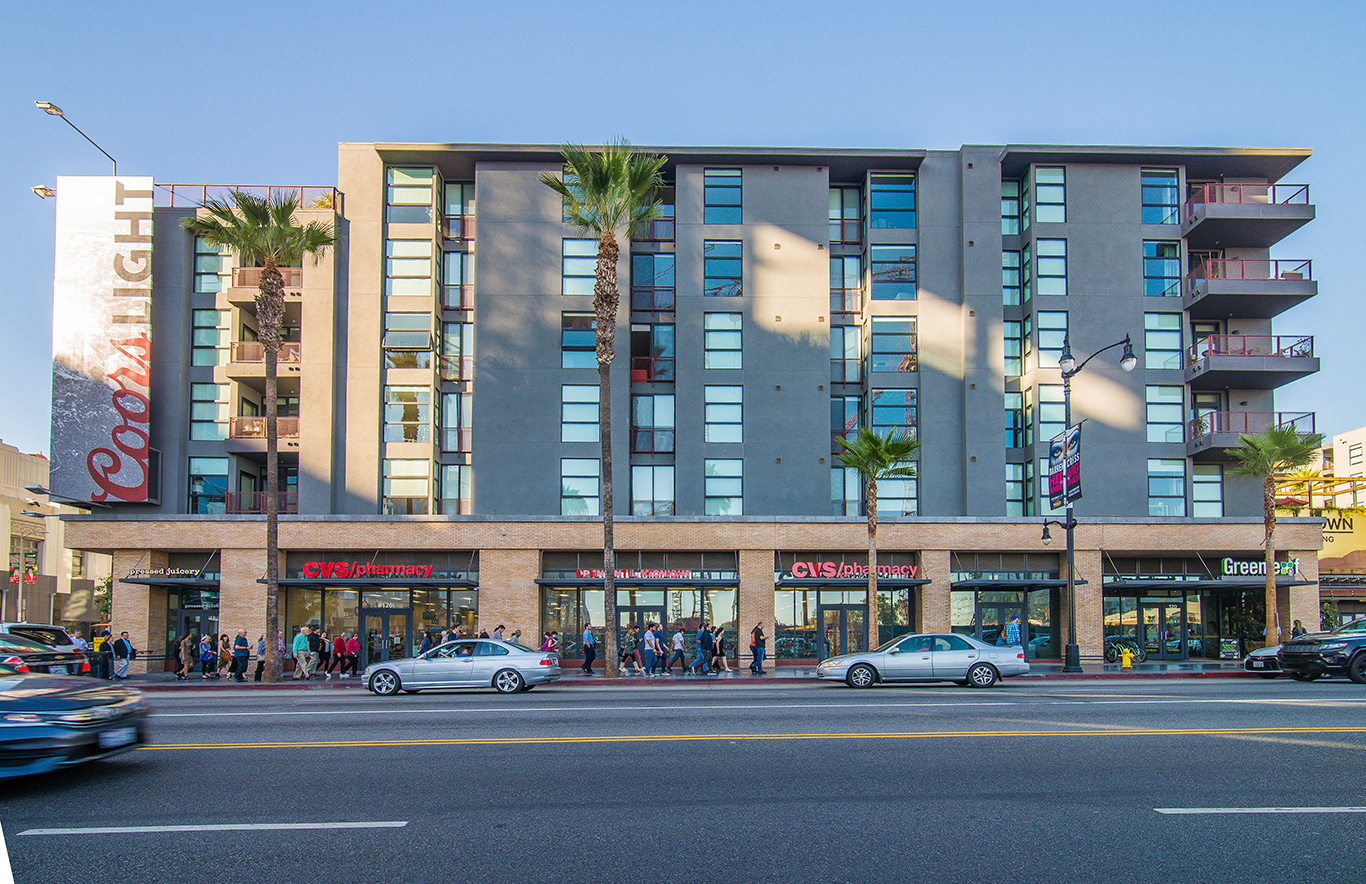Pictured above: A Los Angeles-based mixed-use building managed by our Client Western National Property Management
Like other commercial real estate sectors, retail has had more lives than a cat. Whether it’s COVID, e-commerce or some other Black Swan event, retail manages to emerge triumphant and make lemonade out of lemons.
This is mostly due to the sector’s incredible ability to identify and leverage what consumers deem to be relevant—which is ever-changing. For example, to increase foot traffic and sales in a world where digital shopping continues to grow, many retailers are enhancing customer experiences by integrating technology such as AI and interactive displays, as well as creating spaces for events. A study by G Capital Funding found that properties hosting regular community events see higher foot traffic and sales, and 79% of residents will opt to walk to such amenities.
One thing we have learned about the retail sector is how much it embraces innovative thinking in the face of challenges. Here are three innovative retail trends that demonstrate retail’s out-of-the-box thinking. We believe these trends bode well for the sector’s future success.
- Pickleball Courts: Serving Up Foot Traffic
Pickleball, America’s fastest-growing sport, is making its way into retail centers. The Trust for Public Land reports a 650% increase in outdoor public park pickleball courts over the past seven years.
Retailers are capitalizing on this trend by incorporating pickleball courts into their spaces. For instance, Pickleball America has leased over 80,000 square feet in a former Saks Off 5th store in Connecticut’s Stamford Town Center, anticipating over 500,000 visitors annually.
These additions not only attract sports enthusiasts but also families and social groups, increasing dwell time and potential spending. Retail centers are capitalizing on this trend by incorporating pickleball facilities as experience-based anchors in malls, much like movie theaters or gyms. Venues often integrate pickleball courts with food courts, cafes, or health and wellness stores, creating a lifestyle destination. These spaces can also host events, clinics, and social mixers, further rooting them in the community.
- Pop-Up Shops: Temporary Spaces with Lasting Impact
Pop-up shops are redefining retail by offering temporary, low-cost retail experiences. According to Capital One Shopping, pop-up shops generate up to $80 billion in annual revenue, with projections indicating that the market value will exceed $95 billion by the end of 2025.
These short-term retail spaces allow brands to test new markets, engage with local communities, and create a sense of urgency among consumers. In San Francisco, the “Vacant to Vibrant” program has transformed unused downtown spaces into temporary storefronts, with 11 of 18 participants securing long-term leases.
Retail centers are using pop-up shops to fill empty storefronts temporarily, maintain the appearance of a vibrant, fully leased space, and generate short-term rental income while waiting for long-term tenants. These shops are becoming a great low-risk way to test emerging brands in the brick-and-mortar setting, allow online-only brands like Warby Parker or Allbirds to explore physical locations, and introduce seasonal or handmade products from local artisans and makers. They also can provide immersive experiences such as product demos, workshops, or classes; limited-time events like sneaker drops or influencer appearances; and seasonal themes like holiday gift shops or Halloween costume boutiques.
Expect to see continued growth in tech-enabled pop-up platforms like Storefront and Appear Here, themed pop-up districts within larger malls, and hybrid setups that mix fitness, food, and shopping—often in lifestyle centers.
- Indie Markets: Celebrating Local Culture
Indie markets are gaining popularity as consumers seek unique, locally sourced products. Retailers are responding by hosting local events featuring regional products and creating spaces that reflect and celebrate local culture and history. This community-focused approach fosters customer loyalty and positions retail centers as integral parts of their neighborhoods. Examples of successful indie markets include Renegade Craft Fairs in Chicago, L.A. and Austin; and Smorgasburg in New York City and L.A., which hosts a mix of indie food and product vendors in a festival-style setting.
These local markets satisfy consumers’ desire for unique experiences—especially Millennials and Gen Z, who seek out experiences as much as products. This concept offers discovery—one-of-a-kind items not found in big-box stores—and a chance to interact with the people who made them.
Indie markets also provide support for local economies, as they can double as community events with live music, food trucks, workshops, and artist demonstrations. They create spaces for cultural exchange and social connection, reinforcing a sense of place. And many indie vendors focus on ethical sourcing, small-batch production, upcycled materials, and sustainable practices, aligning with the values of socially conscious consumers.
The retail sector is characterized by innovation and adaptability. By thinking outside the box and embracing unconventional strategies such as incorporating pickleball courts, hosting pop-up shops, and celebrating local culture, retail stakeholders can create vibrant, engaging spaces that attract and retain customers. These strategies not only enhance the customer experience but also drive foot traffic and sales, ensuring the continued success of retail centers in an ever-evolving market.


